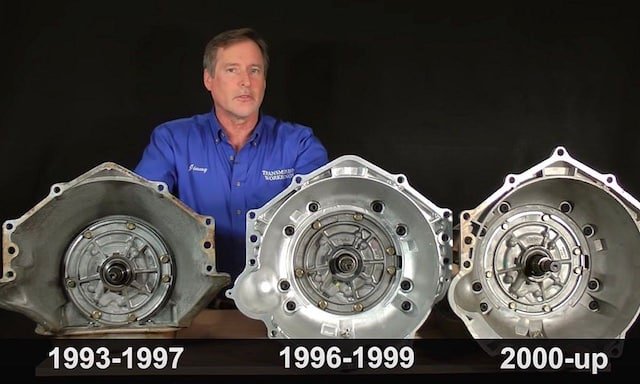GM fuel pumps are designed to be durable and last for years (if properly installed and maintained). Like most automobile components, GM fuel pumps need to be replaced when they begin to misbehave.
These replacements come in different color codes which makes in-house or DIY installation a dicey experience. For easy installation, we recommend following the instructions on your car’s manual or seeing an expert.
If you don’t have a manual or an expert to guide you, it is all good. What you need to replace a GM fuel pump is to understand the basic concept.

This article is all about the basic concept of fuel pump installation, common problems that may ensue, and how to solve them.
- GM Fuel Pump Wires Color Codes Guide
- How To Install A GM Fuel Pump Using Color Codes
- Fuel Pumps and Power Wire
- How To Use A Digital Multimeter To Find The Power Wire
- GM Fuel Pump Issues That May Arise From Bad Wiring
- 4 Most Common Wiring Mistakes You Should Avoid
- 1. Using An Old Or Damaged Connector
- 2. Not Replacing The Fuel Filter
- 3. Using The Wrong Fuel Tank Gasket Size
- 4. Allowing Debris To Enter The Fuel Tank When Removing It
- Maintenance Tips For GM Fuel Pumps
- Wrap-up
GM Fuel Pump Wires Color Codes Guide
Fuel pump wires can be blue, yellow, green, pink, red, white, orange, and black, to name a few. For most GM fuel pumps:
- The green and yellow wire – comes from the fuel pump and connects to the inertia shut-off switch.
- The white (can also be pink or black) – is the pump power and it connects with the inertia switch.
- The blue or green wire – represents low warning lights or indicators for the fuel section. Light blue wire links to the fuel gauge.
- The black or red wire – represents the fuel level sender. The black wire is for fuel level sender negative while the red is usually for fuel level sender positive.
NB: Grounds are negative and are represented by a black code.
Now that you are familiar with the common color codes in a fuel pump, let’s proceed to installation.
How To Install A GM Fuel Pump Using Color Codes
To wire your fuel pump to your battery, you need to know the wires suitable for both positive and negative sides. This is because the fuel pump and fuel sender both have positive and negative ends. The ground is negative.
Wires that are not black mostly sit well in the positive area. The black wire connects with the ground (negative) area. Installation videos for your vehicle’s fuel pump type can also make the whole process enjoyable and less of a trial and error.
Fuel Pumps and Power Wire
The power wire is a primary component of fuel pumps. It is responsible for the flow of current from the battery to the fuel pump. The most common color for power wires is RED, however, some manufacturers prefer gray, purple, or orange.
If you do not see any red wire or you are not sure if the red wire is the power wire, you can always fall back on your vehicle’s manual or mechanic. A digital multimeter can also help you detect a power wire accurately and without stress.
How To Use A Digital Multimeter To Find The Power Wire
A digital multimeter is a measuring device that evaluates voltage, amps, and resistance in most electrical appliances. These are the steps you must follow if you plan on using a digital multimeter to detect the power wire on a fuel pump:
- Locate the fuel pump. It is usually beside or inside the fuel tank. Study the wires coming from the fuel pump and isolate the thickest wire. This wire is most likely the one providing electricity to the fuel pump.
- A digital multimeter has positive and negative wires. Take these wires and connect them to the appropriate (positive and negative) terminals on the fuel pump.
- Place the key on the ignition but do not turn on the engine. Adjust the key until the battery is on and check the reading on the multimeter. It should read a voltage of between 0.1 to 0.5.
GM Fuel Pump Issues That May Arise From Bad Wiring
Color codes were introduced specifically to reduce the cases of mismatching or wrong wiring of fuel pumps. Nevertheless, we are human and mistakes happen.
Here are some issues that may arise as a result of bad wiring:
- The engine will require multiple attempts to fully ignite or will not start at all.
- When you press the acceleration pad, its response will be extremely slow. This is because the fuel pump cannot deliver an adequate amount of fuel to the engine.
- The check engine light might remain on. Vehicles have a dashboard that contains different and colorful indicators that communicate with each other. Check engine light belongs in this category and may be turned on for a couple of reasons and bad fuel pump wiring is one of them.
4 Most Common Wiring Mistakes You Should Avoid
1. Using An Old Or Damaged Connector
Fuel pump installation is simply a plug-and-play process. In other words, all you need to do is plug the new fuel pump into the vehicle’s side connector. As simple as this sounds, most people fail to examine the condition of the vehicle’s side connector.
An old or damaged connector can result in a poor or loose connection. Loose connections are the major cause of stumbling and usually short the life of the new pump.
Replacing the old or damaged side connector should fix this issue. If other problems surface after replacing the kit, clean all the wires involved in the plug-and-play procedure.
2. Not Replacing The Fuel Filter
Some cars come with a separate fuel filter. It is important to always check for a fuel filter before working on any vehicle. If there is a filter, you should consider replacing it alongside the fuel pump.
This is because the old filter is most likely (90% of the time) to be clogged. A partially clogged fuel filter can damage the new pump and make you restart the process in no time at all.
3. Using The Wrong Fuel Tank Gasket Size
Universal-sized gaskets don’t work for all fuel tanks. It is always best to buy the exact gasket size for your fuel tank before fuel pump installation.
If you opt for a universal or wrong-sized gasket, air will infiltrate the fuel tank and cause an emission system code to be triggered. Fixing this error involves getting a suitable gasket size and is usually very expensive.
Stick to quality GM fuel pumps. They come with the right gasket.
4. Allowing Debris To Enter The Fuel Tank When Removing It
This is more or less inevitable. When you eject a fuel tank from a car, debris around may find its way inside it and contaminate the fuel.
A contaminated fuel clogs fuel pumps faster, hence, premature pump failure. You can prevent this easily by taking time to clean the debris off the fuel tank before removing it.
Maintenance Tips For GM Fuel Pumps
- Before replacing a fuel pump, it is essential to know what spoiled the previous pump. Failure to carry out an accurate diagnosis may result in future problems.
- Ensure your fuel system is always clean and free of debris. This favors proper operation and longevity.
- You must inspect the electrical connections, pressure, volume, and current of the fuel system before starting a fuel pump installation. If there are deficiencies, carry out further diagnosis and correct them before starting installation.
- When servicing an electric fuel pump, do not forget to replace the strainer and inspect the inline fuel filter for contamination, which could hinder adequate fuel flow within the fuel system.
- You should constantly maintain a proper fuel level. This aids in cooling the pump and makes them last longer.
Wrap-up
Different vehicles have different wiring color options for their fuel pumps. Installing a fuel pump by yourself remains a very tricky procedure but it does not hurt to understand the basics surrounding it.
You can combine this knowledge with other resources like your car’s paper guide or an instructional video and give it a try. Please note that this does not mean that things would work perfectly.
However, if you don’t feel confident enough, consult an expert and let them fix it for you. Most times, it is best to let experts handle the process as you can also learn from them.







